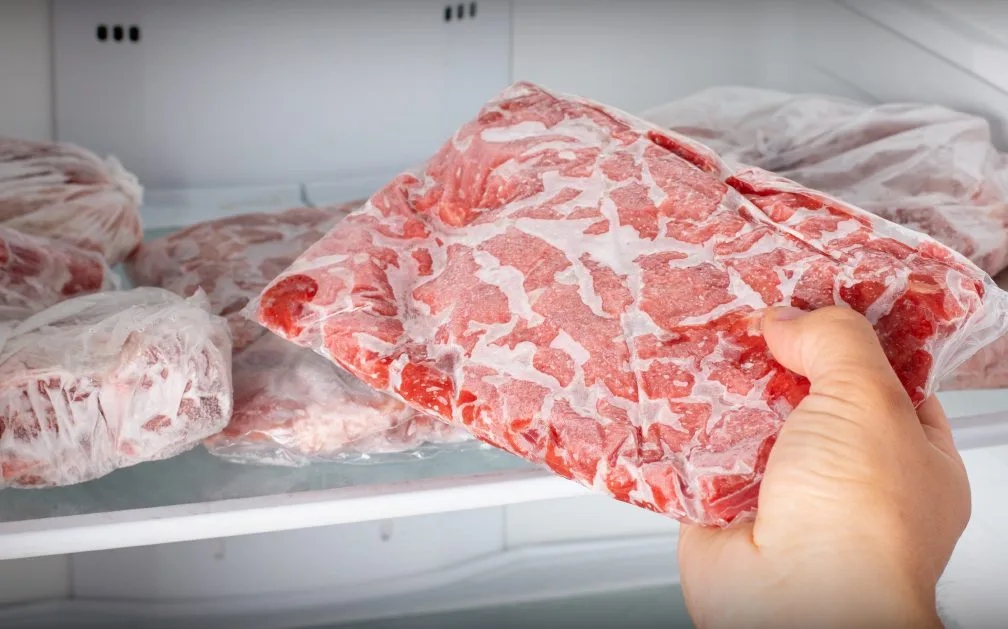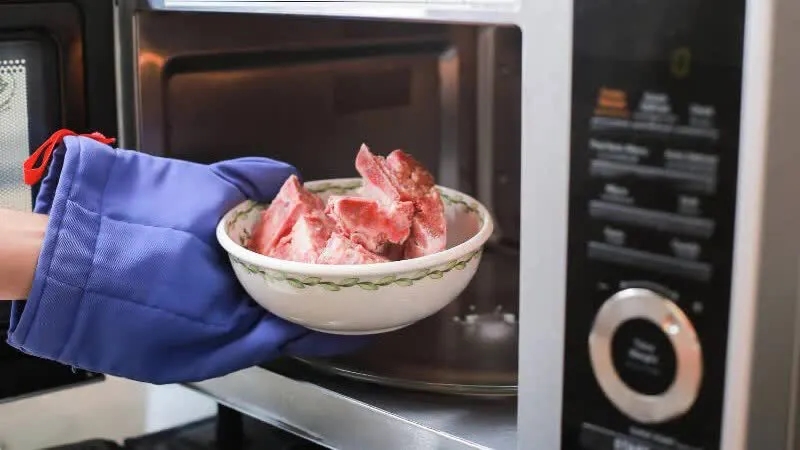Cooking meat that hasn’t been properly thawed is a common mistake made by many home cooks. During preparation, improper thawing can affect not only the quality of the dish but also pose potential health risks.
When cooking frozen meat without thawing, the heat cannot penetrate evenly throughout the meat. This results in the outer part of the meat cooking first, while the inside remains cold and potentially unsafe for consumption. Additionally, the meat may lose its natural flavor and become tough, dry, and less nutritious.

Properly thawing meat is a crucial step to ensure its safety and quality. Here are some safe thawing methods to consider:
1. Thaw in the Refrigerator
The safest method is to use your refrigerator. Simply move the meat from the freezer to the refrigerator’s cold section about 24 hours before you plan to use it. This gradual thawing process keeps the meat safe from external bacterial contamination.
2. Cold Water Thawing
For faster thawing, you can submerge the meat in a sealed bag in cold water. Place the meat in a closed package or plastic bag and then in a large bowl or container filled with cold water. Change the water once or a few times, depending on the amount of meat, to maintain a temperature higher than the meat for quicker thawing.
3. Microwave Thawing
If you’re in a real hurry, a microwave with a defrost setting can be a good option. A few minutes in the microwave will quickly thaw the meat, but it’s important to cook it immediately afterward to prevent bacterial growth.

4. Warm Water Bath
For a quicker method when short on time, try a warm water bath by mixing cold and hot water in a 5:1 ratio. Add some sugar to the mixture and soak the meat for about 7-10 minutes for rapid thawing.
5. Salt and Vinegar Solution
Prepare a bucket of water with added salt and vinegar, stir well, and then soak the meat. This method not only thaws the meat but also helps retain its sweet flavor during cooking.
These methods provide safe and effective ways to thaw meat. However, remember that refreezing thawed meat is not recommended. Always cook thawed meat immediately and avoid refreezing it to ensure food safety and maintain its fresh taste after cooking.
With this information, you can confidently thaw meat properly, ensuring the well-being of your family.
According to Đời sống pháp luật (Translated: Legal Life)

































